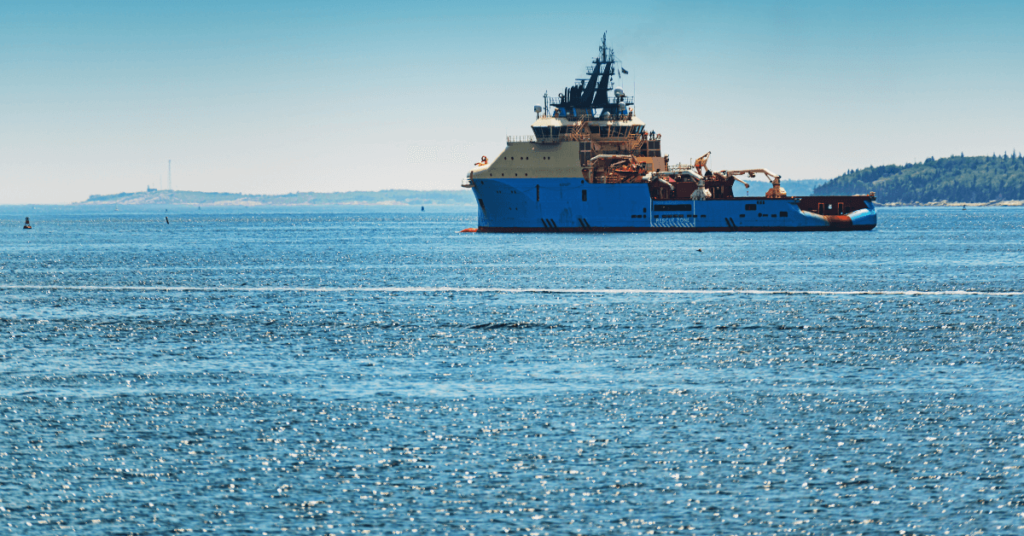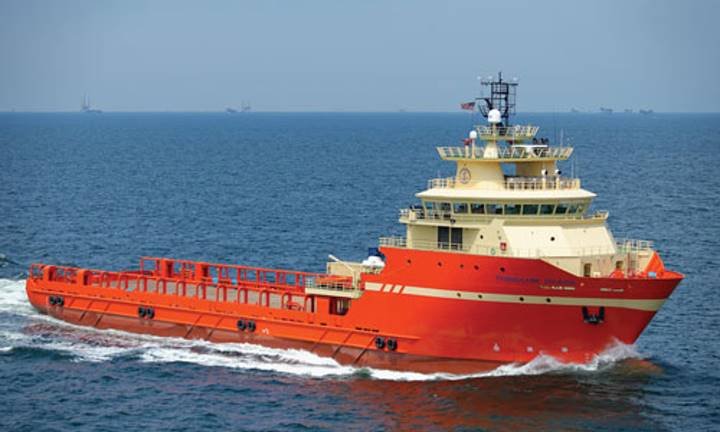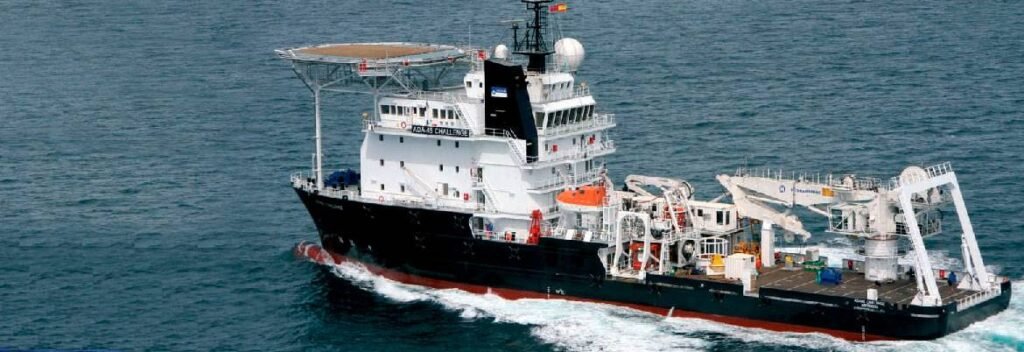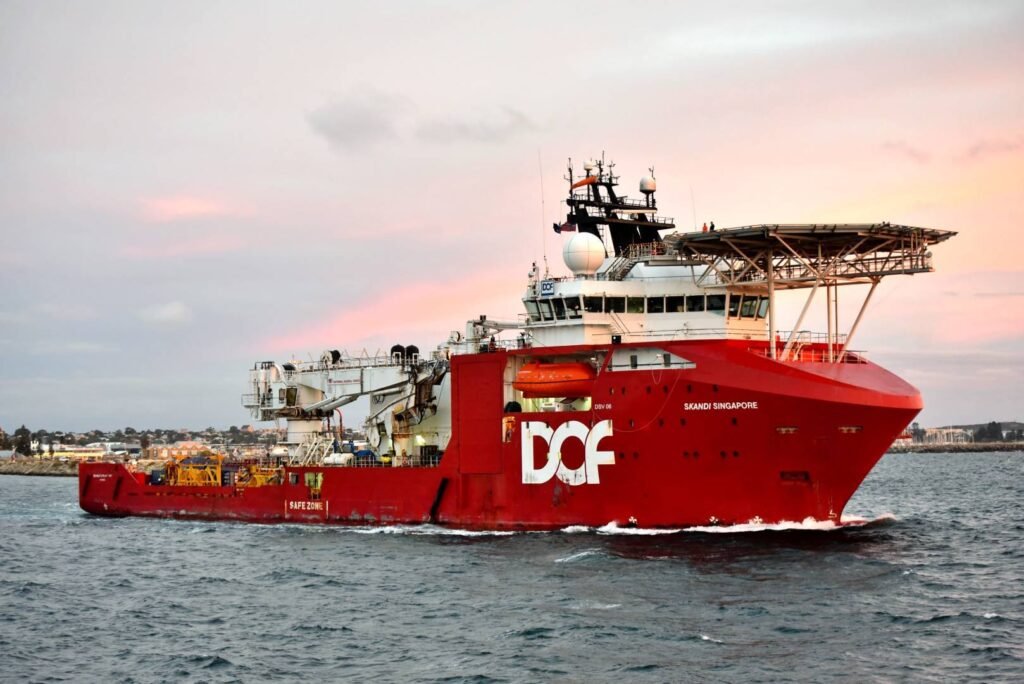A Diving Support Vessel (DSV) is a specialized ship designed to provide support to professional diving operations. These vessels play a crucial role in underwater activities, ranging from offshore construction and maintenance to salvage operations and scientific research.
DSVs are equipped with various features and equipment that enable divers to work safely and efficiently in underwater environments.
The concept of a diving support vessel came into existence four to five decades ago. From that time onwards, these ships have been extremely important to the field of commercial diving which forms a vital part of professional diving.
It has to be noted that professional diving means diving for the prospect of construction, repairing and maintenance of oil-rigs and other important offshore naval constructions. Such dive support ships are mainly used in the North Sea and the Gulf of Mexico since these are the areas from where crude oil is majorly excavated from subsea sources.
Also Read, 5 Biggest Oil Rigs Platforms in the World
Definition of a Diving Support Vessel (DSV)
A Diving Support Vessel is a ship specifically designed to support diving operations. It is equipped with facilities to house and transport divers, as well as equipment to facilitate underwater work. DSVs are typically equipped with diving bells, decompression chambers, and other specialized equipment to support diving operations.
Types of DSVs (Diving Support Vessel)
There are several types of Diving Support Vessels, including:
- Surface-Supplied DSVs: These DSVs use hoses to supply air and other gases to the divers from the surface.
- Saturation DSVs: These DSVs allow divers to stay underwater for extended periods by saturating their tissues with gases at pressure.
- Self-Propelled Hyperbaric Lifeboats (SPHL): These are small, self-propelled vessels used to transport divers to and from the worksite.
Features and Components of a DSV (Diving Support Vessel)
DSVs are equipped with various features and components to support diving operations, including:
- Diving Bells: A pressurized chamber used to transport divers to and from the underwater work site.
- Decompression Chambers: Used to gradually reduce the pressure on divers returning to the surface to prevent decompression sickness.
- Launch and Recovery Systems: Used to deploy and retrieve diving equipment and personnel.
- Moonpools: Large holes in the center of the vessel through which divers can enter and exit the water.
Role and Importance of Diving Support Vessel in Underwater Operations
DSVs play a crucial role in underwater operations by providing a safe and efficient platform for divers to work from. They allow for longer and deeper dives than would be possible using traditional diving techniques, making them essential for a wide range of underwater activities.
A diving support vessel (DSV) plays a crucial role in underwater operations, particularly in offshore environments. A DSV is a ship that serves as a floating base for professional diving projects, providing the necessary support for divers to carry out construction, repair, and maintenance work on oil rigs and other offshore naval constructions.

The key components of a DSV include dynamic positioning, saturation diving system, stages, wet and dry bells, bell cursors, launch and recovery systems, cross-hauling gear, hyperbaric evacuation facilities, breathing gas storage, gas blending, distribution, and helium reclaim systems, remotely operated underwater vehicles (ROVs), rigging and lifting gear, tools and equipment for underwater work, tools and equipment for maintenance and repair of diving systems, moon pool, diver lift, diving bell, diving ladder, boarding stirrup, diver down flag, diving shot, jackstay, reserve gas supply, hot water system, downline, video inspection class ROVs, decompression tables, dive planning and recording equipment, and safety equipment.
The DSV’s ability to keep station accurately and reliably throughout a diving operation, often in close proximity to drilling or production platforms, is essential for positioning to degrade slowly enough in deteriorating conditions to recover divers without excessive risk, and to carry the necessary support equipment for the mode of diving to be used.
The DSV’s dynamic positioning system, which is controlled by a computer with input from position reference systems, is used to help the vessel stay steady on the water, preventing it from moving away from the intended diving spot, which could cause complications to the diver.
The saturation diving system enforces the presence of a combination of certain important gases like helium and oxygen for the diver, preventing complications like lack of air leading to suffocation.
The DSV’s ROVs are used to carry out inspection or survey work, installation and configuration of equipment, monitoring of an operation, or recovery of lost or abandoned equipment, and are increasingly sophisticated units able to operate a wide variety of tooling, sensors, and other instrumentation.
The DSV’s safety equipment, including hyperbaric lifeboats, hyperbaric stretchers, and saturation systems, is essential for preventing accidents and mishaps during diving operations
How Diving Support Vessel Support Diving Operations
DSVs support diving operations in several ways, including:
- Transporting Divers: DSVs transport divers to and from the worksite.
- Providing Life Support: DSVs provide divers with a source of breathable air and other gases.
- Facilitating Decompression: DSVs provide facilities for divers to decompress safely after a dive.
Here’s a Simple Video from a Professional Diver onboard Diving Support Vessel engaged in Diving Operations
Also Read, Megalohydrothalassophobia – Fear of large Underwater creatures or Objects
Key Equipment on a Diving Support Vessel
Key equipment found on a DSV includes:
- Diving Bells: Used to transport divers to and from the worksite.
- Decompression Chambers: Used to decompress divers safely after a dive.
- Launch and Recovery Systems: Used to deploy and retrieve diving equipment and personnel.
Safety Measures on Diving Support Vessel
Safety is paramount on DSVs, and various measures are in place to ensure the safety of the crew and divers, including:
- Regular Safety Inspections: DSVs undergo regular safety inspections to ensure they meet safety standards.
- Safety Training: Crew and divers undergo regular safety training to ensure they are aware of safety procedures.
- Emergency Response Plans: DSVs have emergency response plans in place to deal with any emergencies that may arise.
Advantages and Disadvantages of Diving Support Vessel

DSVs offer several advantages, including:
- Increased Safety: DSVs provide a safe and controlled environment for divers to work in.
- Efficiency: DSVs allow for longer and deeper dives than traditional diving techniques.
- Versatility: DSVs can be used for a wide range of underwater activities.
However, DSVs also have some disadvantages, including:
- Cost: DSVs can be expensive to build and maintain.
- Environmental Impact: DSVs can have a negative impact on the environment, particularly in sensitive marine areas.
Diving Support Vessel in the Oil and Gas Industry
DSVs play a crucial role in the oil and gas industry by supporting a wide range of underwater activities, including:
- Inspection and Maintenance: DSVs are used to inspect and maintain underwater infrastructure, such as pipelines and platforms.
- Construction: DSVs are used in the construction of new offshore installations, such as platforms and subsea pipelines.
- Salvage Operations: DSVs are used in salvage operations to recover sunken vessels and equipment.
Diving Support Vessel in the Offshore Renewable Energy Industry
DSVs are also used in the offshore renewable energy industry to support activities such as:
- Wind Farm Maintenance: DSVs are used to maintain offshore wind farms, including inspecting and repairing underwater components.
- Tidal and Wave Energy: DSVs are used to install and maintain tidal and wave energy devices.
Diving Support Vessel in the Military
DSVs play a crucial role in the military by supporting a wide range of underwater activities, including:
- Underwater Reconnaissance: DSVs are used for underwater reconnaissance missions to gather intelligence.
- Mine Countermeasures: DSVs are used in mine countermeasure operations to detect and neutralize underwater mines.
Future Trends in Diving Support Vessel Technology

The future of DSVs is likely to be characterized by advancements in technology, including:
- Automation: Increased automation of DSVs to reduce the need for human intervention.
- Remote Operation: Greater use of remote operation technology to control DSVs from a distance.
- Environmental Sustainability: DSVs are likely to become more environmentally sustainable, with a focus on reducing their carbon footprint.
In the five decades of their existence, the demand for diving support vessels has increased considerably. As mentioned above, they have been a vital support system to the oil drilling industry but this relevance and importance has gone up even more in today’s times.
This is because, in contemporary times, offshore oil drilling has become the major source for oil supply to the whole world. And since the machinery utilised for offshore oil drilling purposes require continuous maintenance, asking trained men to take care of the necessary maintenance work is the best possible solution.
DSVs play a crucial role in a wide range of underwater activities, from offshore construction and maintenance to salvage operations and scientific research. These specialized vessels are equipped with various features and equipment to support diving operations safely and efficiently.
As technology advances, DSVs are likely to become even more versatile and environmentally sustainable, ensuring they continue to play a vital role in underwater operations.
You may also like,
360 Degree View of Diving Support Vessel
In this Video “Diving support vessel BOKA Atlantis,” the captain, Matt Porteous, welcomes viewers to the vessel and takes them on a tour. He demonstrates the dynamic positioning console used during diving operations and the port bridge ring, which allows him to bring the vessel alongside in port.
The hyperbaric lifeboats for the divers are located on each side, and viewers follow him to see the saturation chambers where six men can live for four weeks. The tour continues to chamber four and the escape hatch for the hyperbaric lifeboat.
They then move to the bridge of the starboard diving bell, which can take three divers to depths of 300 meters. Finally, viewers go outside to the aft deck, where they see a 140-ton active compensated offshore crane, a backup crane, and the accommodation and dive systems located below deck.
The assistant project manager, Job, then takes over and shows the audience the 1100 square-meter back deck and the moon poles for the Bell, wrapping up the tour of the BOKA Atlantis.
FAQs
- What is a Diving Support Vessel (DSV)? A DSV is a specialized ship designed to provide support to professional diving operations.
- What are the key features of a DSV? Key features of a DSV include diving bells, decompression chambers, and launch and recovery systems.
- How do DSVs support diving operations? DSVs support diving operations by transporting divers.
Also Read more about DSVs,

